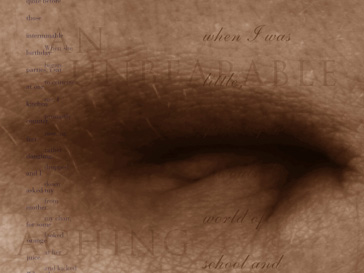 |

 "... technology problematizes our understanding of the body ..." -- Diane Gromala  |
Dancing with the Virtual Dervish: Virtual Bodies, con't ___by Diane Gromala Hypnerotomachia My concerns with what constitute legitimate forms of knowledge, the privileging of certain forms of knowledge (particularly those that repress the bodily knowledges most resistant to representation), and the history of the epistemological and ontological status of immersive images led me to examine other historic eras of dramatic technological change. Was it to be yet another exploration of the erasure of women and a degradation of that which is assigned female? There were, perhaps, I found, irruptive exceptions. My next work, Hypnerotomachia, is a work in virtual (4) and augmented reality that reexamines a 500 year-old book, the Hypnerotomachia Poliphili. This legendary book, produced during the incunabula, (5) has long fascinated scholars, architects, artists, and book designers. Widely regarded as an unsurpassed exemplar of classical book design, it is renowned for its typographic innovation, indecipherable or occult iconography, and interplay of text and image. Structured as a dream-within-a-dream and written in Latin, Greek, and vernacular Italian, the enigmatic text is a concatenation of scholarly treatises interwoven with a trashy romance narrative. This textual and iconographic strategy, along with textual and pictorial references to Arabic and Hebrew, is generally understood as an effort to visually encode those pagan knowledges and early humanist ideas that were in greatest conflict with the Church. 
The aspects of the book that I found most intriguing were the ways in which the book performs and embodies dreamwork, eroticism, gestural and pantomimic ideas of the body, (6) and what Liane Lefaivre contends (7) is the first sustained feminist argument for women's control of expressions of their sexuality. How could this reconfiguration of the body in the context of early humanism be revisited in our own postmodern, posthuman context? The Hypneroromachia is a work-in-progress that situates these questions in contemporary artistic and cultural practices. It explores: the ways in which technology problematizes our understanding of the body; the indeterminacies of the body as culturally constructed, as a symptom that reveals how we view the world, as an irreducible material fact; and strives to reengage the body as the very generative ground of understanding. (8) |
||